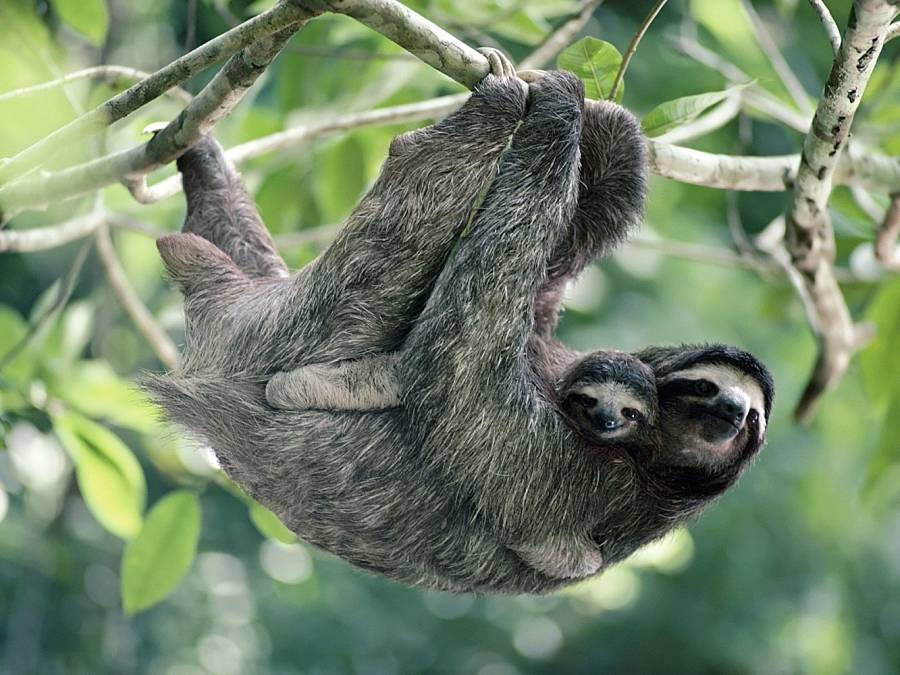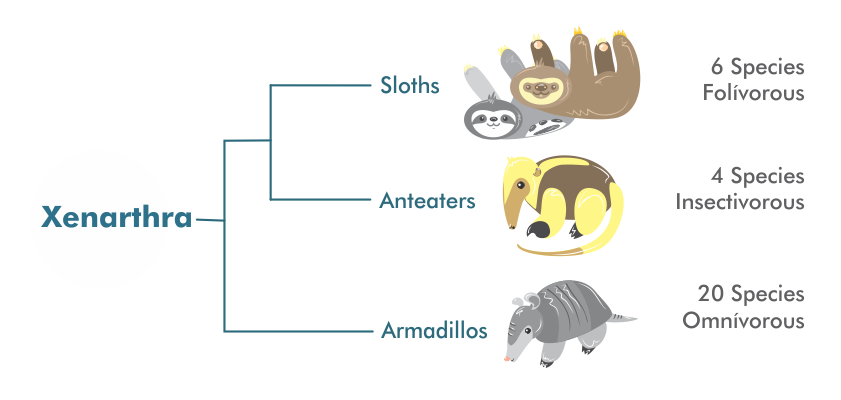Sloths are among the most unique and fascinating creatures in the animal kingdom. Their slow movements, peaceful demeanor, and surprising adaptations have captured the imagination of wildlife enthusiasts, researchers, and nature lovers alike. Despite their relaxed appearance, sloths are complex animals with traits and behaviors that help them survive in the dense rainforests of Central and South America. Here are 20 intriguing facts about sloths, detailed in more than 600 words to give you a deeper appreciation of these gentle creatures.
1. Two Main Types of Sloths
There are two main types of sloths: two-toed sloths (genus Choloepus) and three-toed sloths (genus Bradypus). Despite the name, both types have three toes on their hind limbs; the difference lies in the number of fingers on their front limbs.

2. They Are Extremely Slow Movers
Sloths are famous for their slow movements, which are an energy-saving adaptation. On average, a sloth moves about 0.03 miles per hour. Their sluggishness makes them less noticeable to predators like eagles, jaguars, and snakes.
3. Sloths Sleep Most of the Day
Sloths sleep for about 15 to 20 hours a day. Their slow metabolism means they need lots of rest to conserve energy.
4. Algae Grow on Their Fur
Sloths often have a greenish tint because algae grow on their fur. This not only gives them camouflage but also creates a mini-ecosystem for insects, including moths that live exclusively in sloth fur.

5. They Come Down Once a Week to Poop
Amazingly, sloths descend from trees only about once a week to defecate. This is a vulnerable time for them, as they are more exposed to predators on the ground.
6. They Are Surprisingly Good Swimmers
Though slow on land, sloths are excellent swimmers. They can hold their breath for up to 40 minutes and use their long arms to glide through water with ease.
7. Sloths Have a Very Low Metabolism
Sloths have the slowest metabolism of any mammal. It can take them up to a month to digest a single meal, thanks to their complex, multi-chambered stomachs.
8. They Only Eat Leaves
Sloths are herbivores that primarily eat leaves, which are low in calories. Their digestive systems are specially adapted to break down this tough, fibrous diet.
9. Sloths Can Turn Their Heads 270 Degrees
Three-toed sloths have extra neck vertebrae that allow them to rotate their heads up to 270 degrees, giving them a wider field of vision to spot predators from their tree-top homes.
10. Baby Sloths Cling to Their Mothers
After birth, baby sloths cling to their mothers for about six months, learning how to navigate trees and find food by copying her behavior.

11. Sloths Are Solitary Animals
Sloths are largely solitary creatures, meeting only to mate. Each sloth typically occupies its own range of trees in the forest canopy.
12. They Are Nocturnal
Most sloths are nocturnal, being more active during the night and sleeping during the day, though some activity patterns can vary by species.
13. Their Long Claws Are Multi-purpose
A sloth’s claws, which can be up to 4 inches long, are used for gripping branches, hanging upside down, and defending themselves if threatened.
14. They Rarely Drink Water
Sloths get most of their water from the moisture in leaves and morning dew, rarely descending to drink from water sources.
15. Sloths Have Poor Vision and Hearing
Sloths rely primarily on touch and smell. Their eyesight and hearing are poorly developed, which contributes to their slow and cautious nature.
16. They Can Live for Over 30 Years
In the wild, sloths can live up to 20 years, and in captivity, some have reached 30 years or more with proper care.

17. Their Fur Grows in the Opposite Direction
Unlike most mammals, a sloth’s fur grows from belly to back, which helps rainwater run off more efficiently while hanging upside down.
18. Sloths Are Related to Anteaters and Armadillos
Sloths belong to the order Pilosa, making them distant relatives of anteaters and armadillos. They share common evolutionary traits like long claws and specialized diets.

19. Sloth Populations Are Under Threat
Due to deforestation and habitat loss, some sloth species, like the pygmy three-toed sloth, are classified as critically endangered.
20. They Play a Role in the Ecosystem
Despite their slow pace, sloths play a vital role in the rainforest ecosystem, particularly by supporting algae and insect life in their fur and spreading seeds via their feces.

Final Thoughts
Sloths are much more than just slow, sleepy tree-dwellers. They are highly adapted to their environment, with unique physical traits and behaviors that help them survive in the dense canopies of the tropical forests. Understanding these animals helps us appreciate the delicate balance of ecosystems and the importance of conserving biodiversity.
Whether it’s their algae-covered fur, their tree-hugging lifestyle, or their quiet endurance, sloths remind us that sometimes, slow and steady truly does win the race.
must read – atozfunda.com

